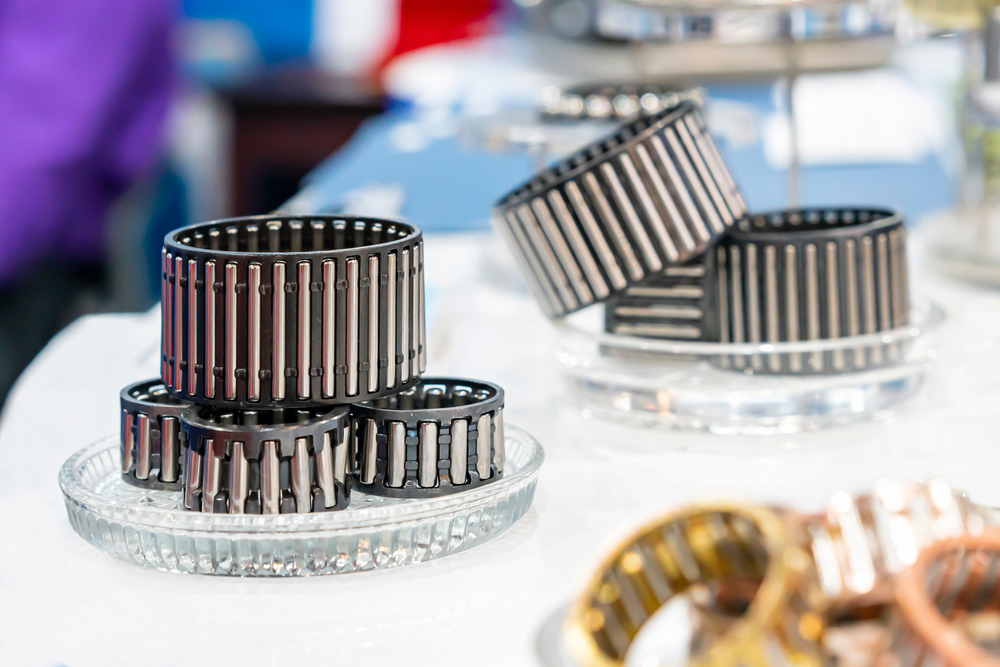
|
Industrial & Automotive Parts |
|---|
Bearings play the role of reducing friction between moving parts in industrial machinery and vehicles, which in turn, has a major influence on the interaction between components and the efficiency of the system. Given the complexity of industrial and automotive equipment, there are many different ball bearings online to accommodate the intricacies of various pieces of machinery. Wide inner bearings, for example, are ball bearings specially designed to fit shaft mountings and support larger loads than regular inner ring bearings.

This means their selection is important to ensure a proper shaft and housing fit, and several factors should be considered to arrive at the right bearing for your application. Industrial and Automotive Parts’ selection guide will cover a range of bearing features including trailer bearings that can be assigned to the different needs of equipment to help you arrive at the most suitable bearing for your requirements. For example, the lock designs of different wide inner bearings can provide the most direction for which option your application needs. We’ll also discuss the permissible speeds, bearing load and axial displacements that different inner ring bearings can accommodate to guide your selection.
Before we delve into the inner bearings selection guide, let’s first cover how wide inner ring bearings work. They have an internal ring that extends beyond the outer ring. Given the extra width of the inner ring, they provide additional shaft support with a larger contact area, meaning they spread the load over a larger area and can accommodate more load, making them appropriate for heavy-duty applications. They’re well suited to large construction vehicles, earthwork machinery, and the agriculture, material handling, industrial transmission and fluid machinery industries.
The extended side of the inner ring bearing consists of seals and flared lips which maintain a strong contact, as well as the outer edge of the inner ring to prevent contaminants from entering the bearing, while still holding the lubricant inside. They can be designed with either single or double seals to prevent the input of debris. They can also come without seals or shields as open bearing types, which won’t protect against the intake of dirt or retain lubricant, but will have higher speed capabilities.
The type of locking device in inner ring bearings is an important distinction between the types, which work to control how the bearing series locks into the shaft.
Ball bearings with set screw locking devices are well-suited to both constant and alternating directions of rotation within an application. They lock onto the shaft before application with screws in the inner ring that secure it to the shaft.
In these bearings, the extended inner ring has an eccentric step to house the locking collar. You can lock the bearing by turning the locking collar in the same direction as rotation with an additional screw to secure it in place. Eccentric locking collar devices are designed for applications with a constant direction of rotation, not ones that alternate directions.
These types have a seal on both sides to retain lubrication and prevent dirt from entering. They can also often be built with lubrication holes to extend their use.
Tapered bore bearings have an inner ring that’s extended to equal lengths on both sides and, like set screw locks, they’re suitable for constant and alternating directions of rotation. They’re sealed on both sides in order to work towards maintaining cleanliness and prolong lubrication.
Once mounted on an adapter sleeve, they allow the full limiting speed to be achieved in applications. With rings extended symmetrically on both sides, these bearings run more smoothly as the degree of tilt is reduced. So, for applications where smooth operation is paramount, tapered bore bearings are a suitable choice.
Wide inner ring bearings come with a limiting speed in their product descriptions, which is often influenced by the seal design. The shaft tolerance also affects the permissible speed for set screw and eccentric collar types. Permissible speed changes under different temperature conditions too, so it’s important to know the temperature of your application, as well as the speed you need it to operate under before selecting the appropriate bearing.
Understanding the load capacity for bearings is imperative to not overload the bearing and damage the application. While these load capacities can be found in each product description, it’s important to know the additional factors at work, too.
A minimum load should be imposed when acceleration is considered rapid or when speeds are likely to increase beyond 75 per cent of the limiting speed. Additionally, the axial load should not exceed 25 per cent of the static load. Understanding the load range of your application is important to help you select the most appropriate bearing.
Inner ring bearings aren’t designed to handle axial displacement of the shaft it accommodates. This means the distance between bearings should be shorter than when using other types to prevent excessive axial loads from causing bearings to fail, which can often occur due to thermal expansion.
In applications where you expect larger axial displacement, an inner ring bearing with set screws is the most suitable to put to work, but the system should have low speeds and light loads to accommodate this. In this case, ensure the shaft that contacts the inner ring is lubricated to ease the motion.For more information on how wide inner ring bearings work beyond that provided in our selection guide, please contact us at Industrial & Automotive Parts today.